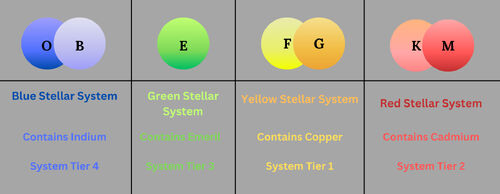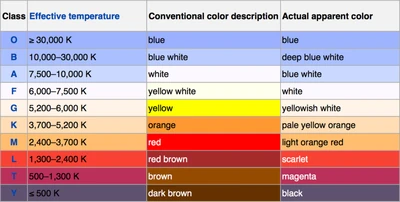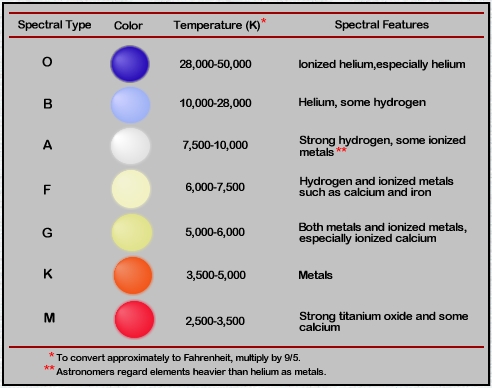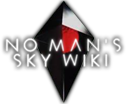| The subject of this article is from the Waypoint update.
The information from this article is up-to-date as of 21 February, 2023. |
The information from this article is up-to-date as of 21 February, 2023.

Spectral class is used as the method of categorizing stars.
Summary[ | ]
All stars are assigned a spectral class, generally composed of three coded characters. For example, the pre-release star Ethaedair is listed with a spectral class of G2m. This indicates that it is one of the hotter yellow stars with enhanced metals, according to how stars are categorised in real life.
No Man's Sky, however, appears only to functionally require the first character; indicating a system's colour. While there are many rumours and hypotheses about deeper stellar class mechanics, all have yet to be proven. This is partially because the only way to prove such a hypothesis would be to simply not find a star that disproves it.
The colour classes in No Man's Sky are as follows, with additional details on the System Colours page.
- (While not confirmed, it is highly probable that the E class in NMS replaces the A class IRL; as every other main sequence star class is present)
- The "tiers" noted are simply the usual order travellers will visit classes in, due to the Stellar Metals.
IRL Information[ | ]

The following information is based on the stars in the Terran universe, but should give an idea of what may be seen in the game. Note that Sol ranks as a G2V.
Class[ | ]

The first character is the star's class (listing Class, Temperature and Colour):
| CLASS | TEMPERATURE | COLOUR | CLASS |
| O | ≥ 30,000 K | blue | Blue |
| B | 10,000-30,000 K | blue-white | Blue |
| A | 7,500-10,000 K | white | |
| F | 6,000-7,500 K | yellow-white | Yellow |
| G | 5,200-6,000 K | yellow | Yellow |
| K | 3,700-5,200 K | orange | Red |
| M | 2,400-3,700 K | red | Red |
| L | 1,300-2,400 K | red-brown | |
| T | 500-1,300 K | brown | |
| Y | ≤ 500 K | dark brown | |
| E | unknown | green | Green |
(Note: The Green Star Class does not exist in the Terran universe, but does in the NMS universe)
Relative Temperature[ | ]
The second character provides a heat range within a specific class, where the lower the number, the hotter the star. For example, a star rated G3 would represent a warmer temperature than G8.
Oddities[ | ]
The third character indicates any oddities for the star. Note that entries referring to spectral lines or specific elements such as hydrogen would be distinctly different in the universe of No Man's Sky.
- e = Emission lines present
- f = N III and He II emission
- h = WR stars with emission lines due to hydrogen
- k = Spectra with interstellar absorption features
- m = Enhanced metal features
- n = Broad ("nebulous") absorption due to spinning
- p = Unspecified peculiarity
- q = Red & blue shifts line present
- s = Narrowly "sharp" absorption lines
- v = Variable spectral feature
- w = Weak lines
Colour Mismatch[ | ]
Based on the information above, the following stars have an apparent mismatch between their color and their spectral class:
| System | Color | Class | Faction | Planets | Moons |
|---|---|---|---|---|---|
| Gakanba-Tisov | Yellow | M2pf | Uncharted | 4 | 1 |
Release History[ | ]
- In the initial Atlas Rises release, Spectral Class was removed from the game. It was restored to the galaxy map text as part of the 1.38 update.
